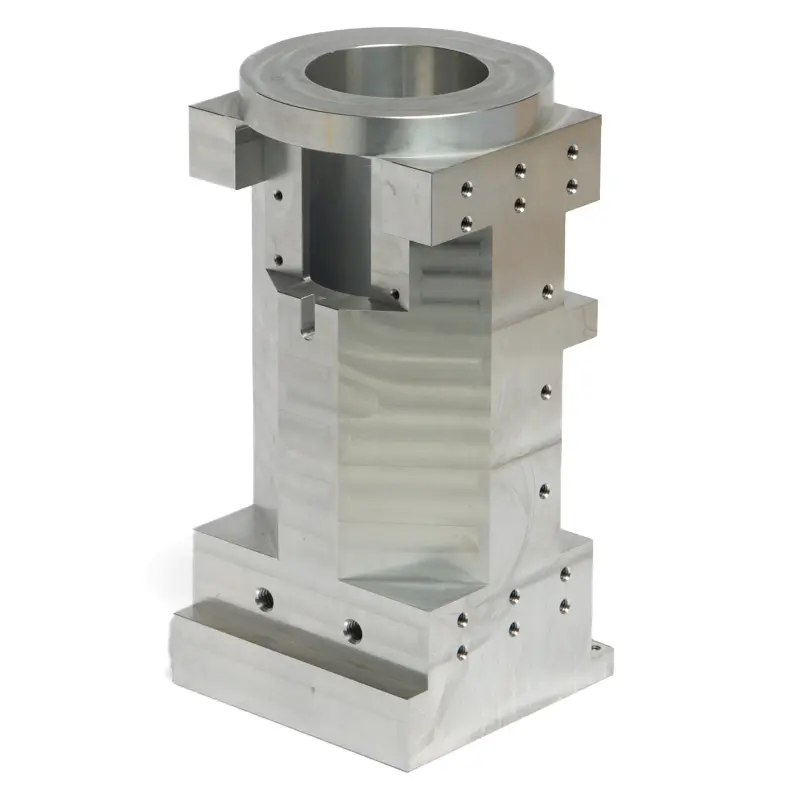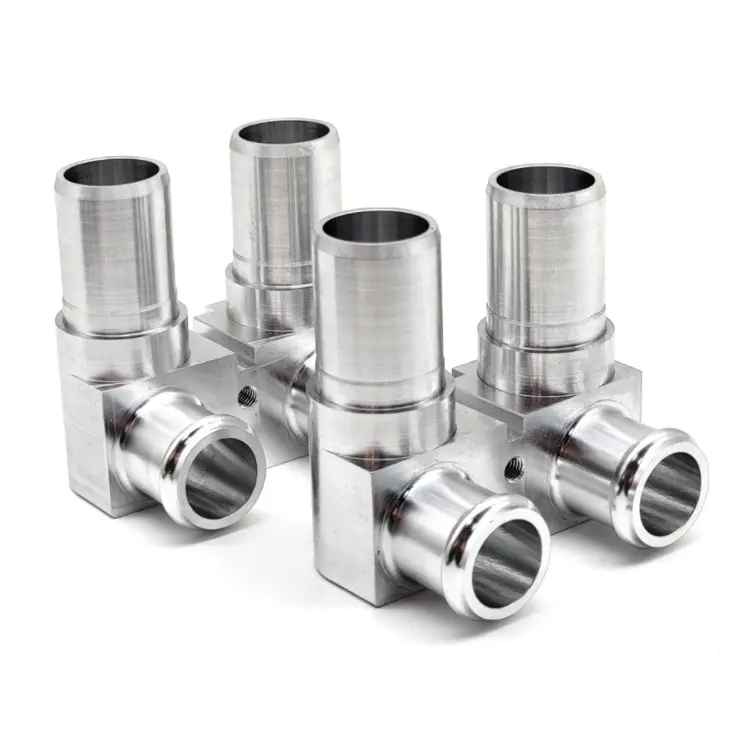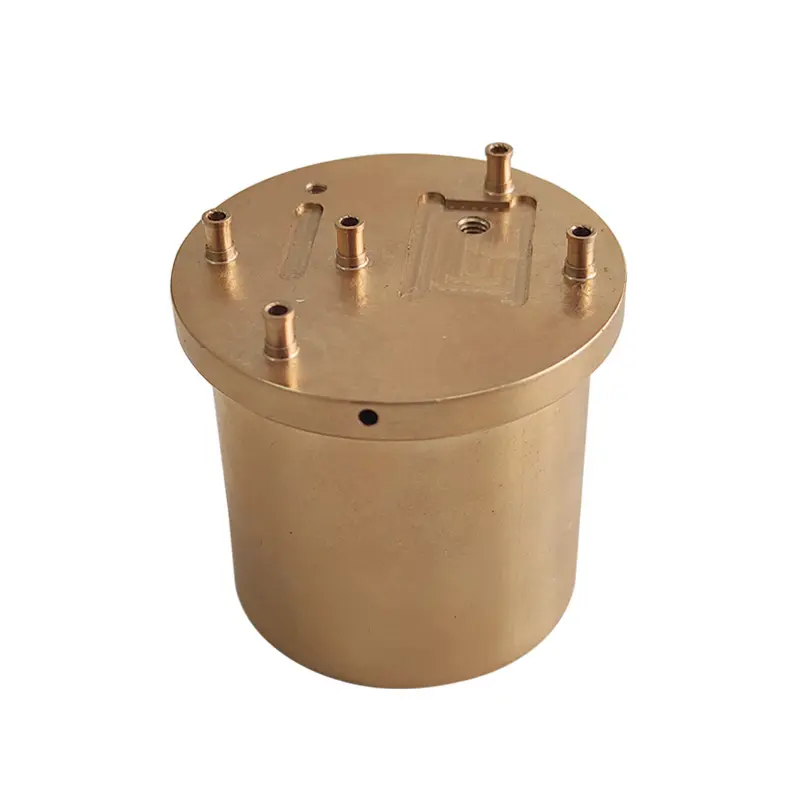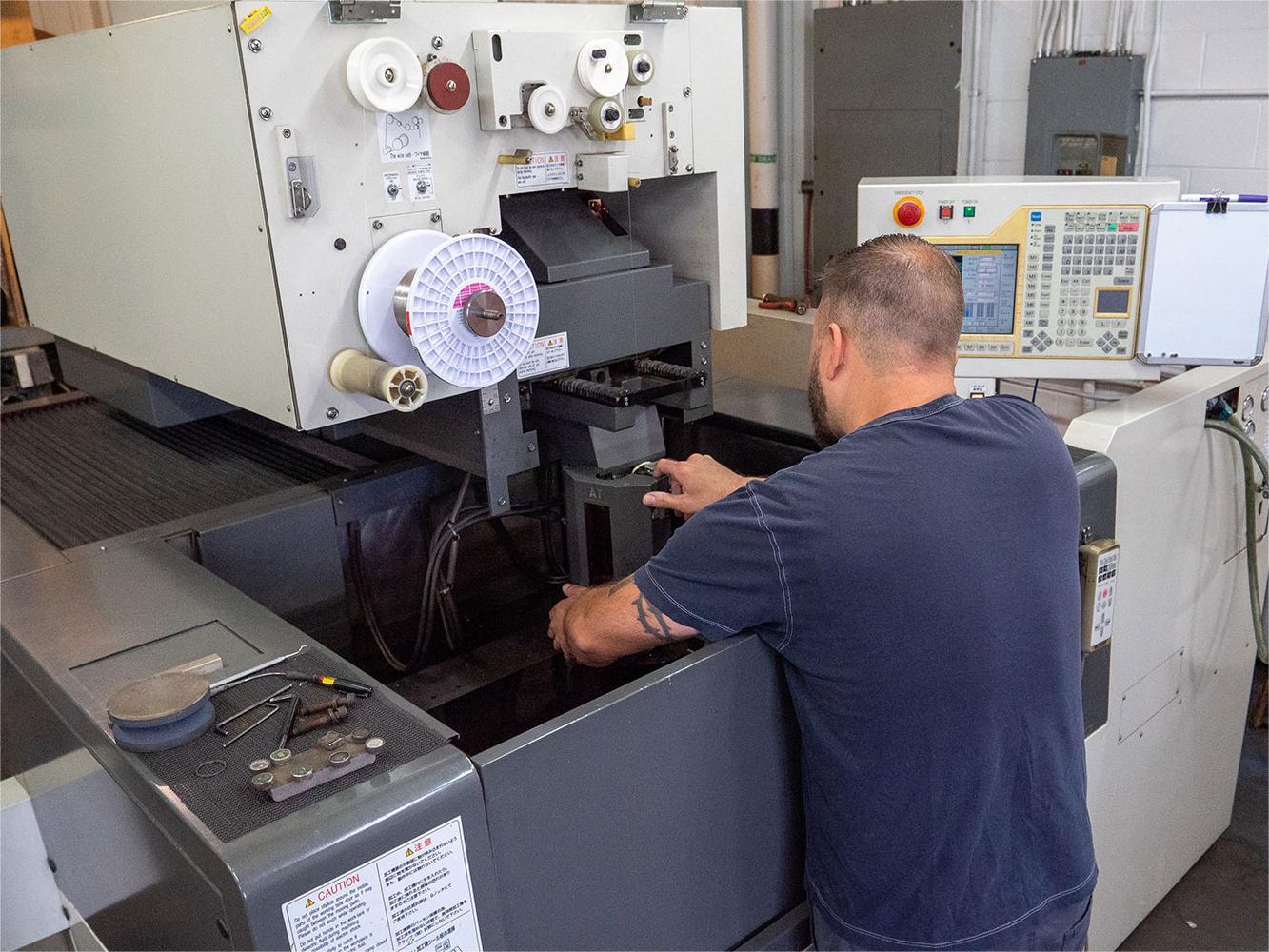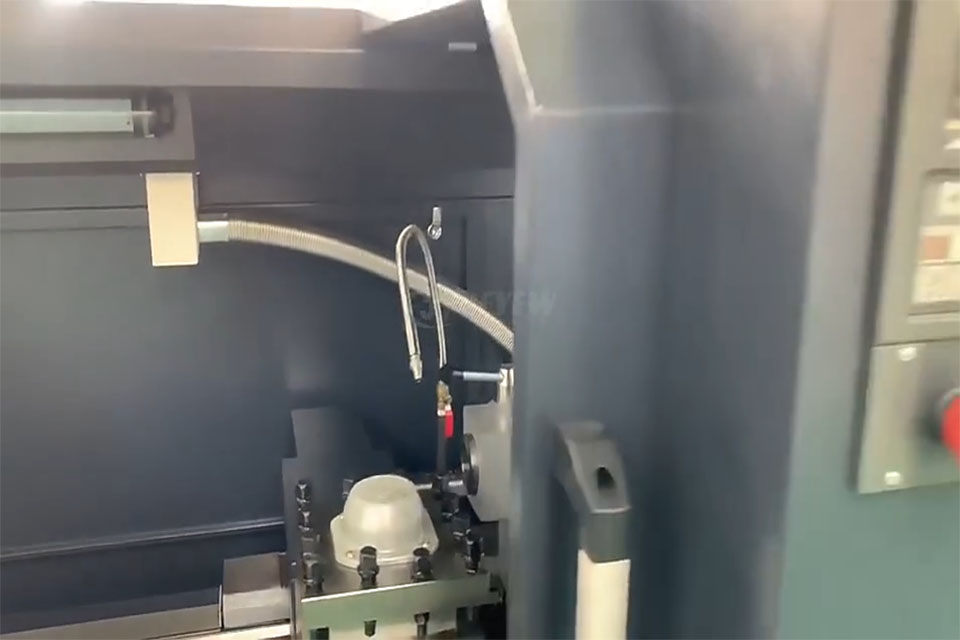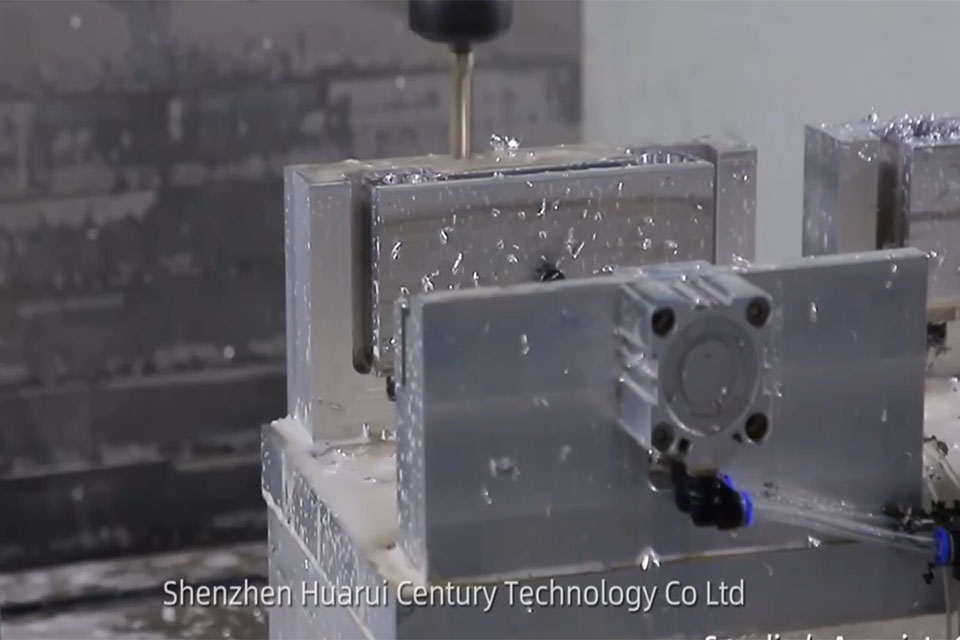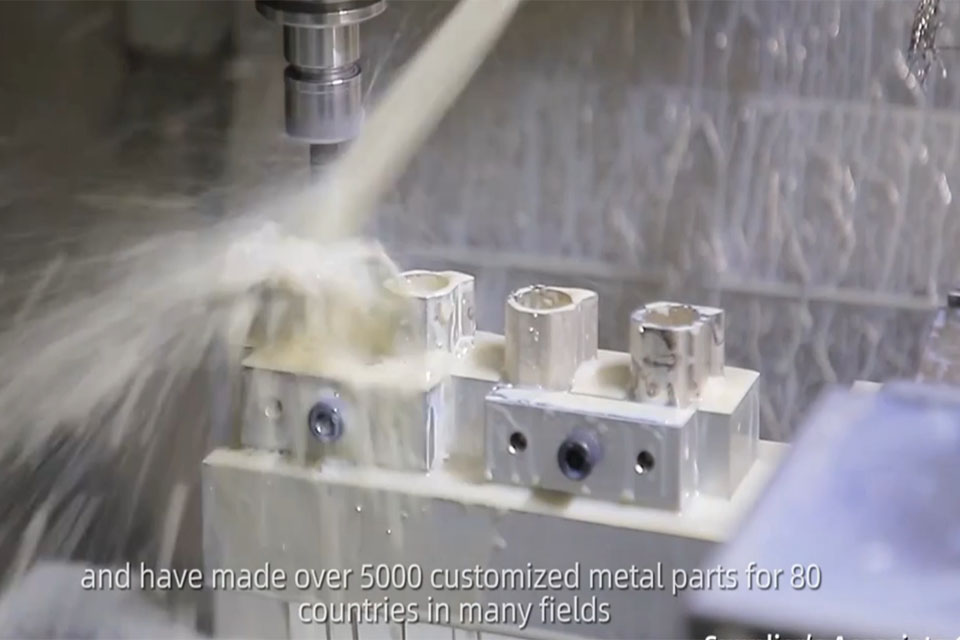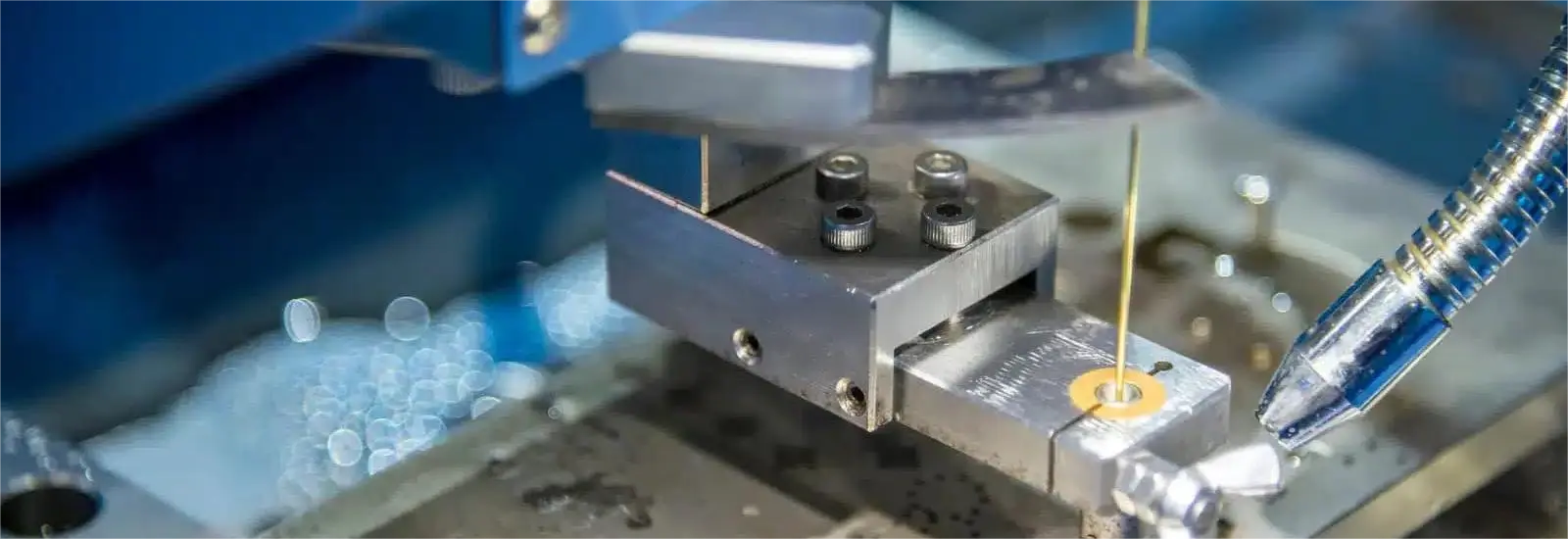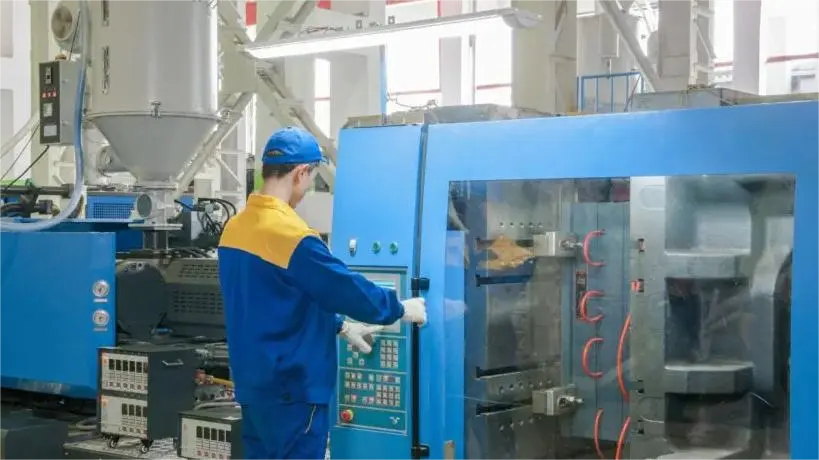
精益求精:为高要求行业提供瑞士加工
目录
导言
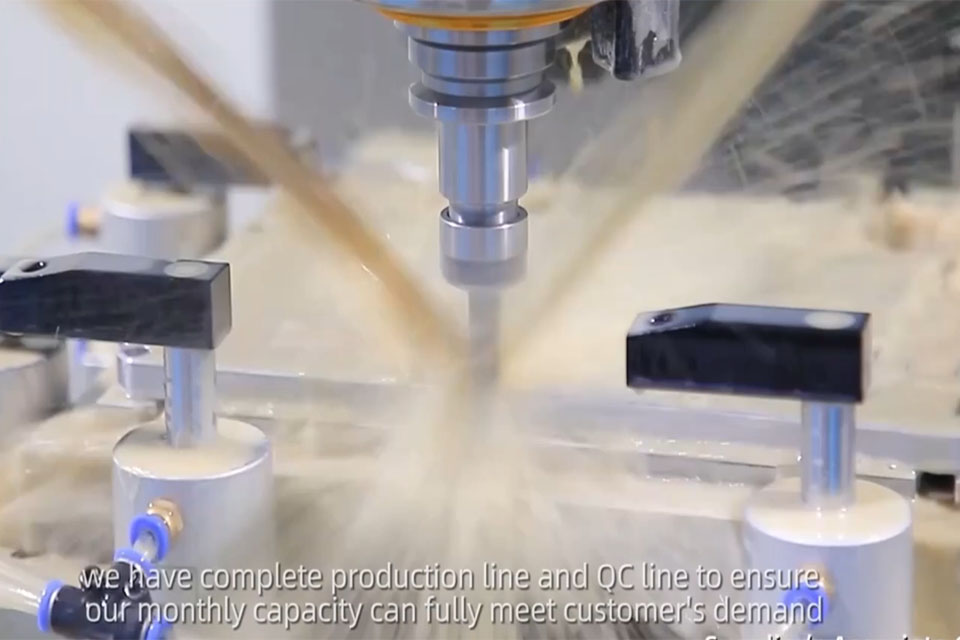
What is Swiss-Style Machining?
Swiss machining, also known as Swiss-type CNC machining, is a highly specialized manufacturing process designed for producing small, complex parts with incredibly tight tolerances. Unlike conventional CNC machining, Swiss machining utilizes a sliding headstock and guide bushing. This unique setup provides exceptional support to the workpiece, very close to the cutting tools, minimizing deflection and vibration along the Z-axis.
This results in:
- 无与伦比的精度 Tolerances as tight as 0.0002-0.0005 inches are achievable.
- Intricate Geometries: Complex shapes and features can be created with ease.
- High Efficiency: Multiple operations can be performed simultaneously, reducing cycle times.
- Superior Surface Finishes: Often eliminating the need for secondary finishing processes.
The Origins of Swiss Machining: A Legacy of Precision
Swiss machining has its roots in the late 19th-century Swiss watchmaking industry. Craftsmen needed a way to produce the tiny, intricate components of pocket watches with exceptional accuracy. Early Swiss machines were manually operated, but the fundamental principle of supporting the workpiece close to the cutting tool was established.
The evolution of Swiss machining includes:
- 1880s: The invention of the Swiss-type screw machine.
- 1960s: The integration of Computer Numerical Control (CNC) technology, dramatically increasing precision and automation.
- 1980s onwards: Expansion into diverse industries like 航空航天, 医疗设备和 汽车在这种情况下,精度至关重要。
Today, Swiss machining is a cornerstone of modern manufacturing, delivering components with ultra-fine tolerances and complex geometries that were previously unimaginable.
How Does Swiss Machining Work? A Step-by-Step Breakdown
The Swiss machining process is a carefully orchestrated sequence of steps:
- Material Loading: A bar stock of the desired material (e.g., stainless steel, titanium, aluminum) is loaded into the machine.
- Guide Bushing Support: The bar stock is fed through a guide bushing, which provides crucial support and stability.
- Machining Operations: A series of cutting tools, mounted on a tool post, perform various operations like turning, drilling, milling, and threading.
- Sliding Headstock Movement: The headstock, holding the workpiece, moves along the Z-axis, precisely controlling the depth and position of the cuts.
- Cooling and Lubrication: Coolants are applied to reduce heat and friction, ensuring precision and extending tool life.
- Part Separation: Once the part is complete, it’s cut off from the bar stock.
- Collection: The finished part is collected, and the process repeats with the next section of the bar stock.
Unique Features of a Swiss CNC Machine
Swiss CNC machines are distinguished by several key features:
| 特点 | 说明 | 益处 |
|---|---|---|
| Guide Bushing | Supports the workpiece close to the cutting tools. | Minimizes deflection and vibration, ensuring high precision. |
| Sliding Headstock | Moves the workpiece along the Z-axis. | Provides precise control over the machining process. |
| High-Speed Spindles | Enable rapid cutting speeds. | Increases productivity and achieves fine surface finishes. |
| Multiple Tooling Stations | Allow for simultaneous operations using various tools (drills, taps, mills). | Reduces cycle times and increases efficiency. |
| Sub-Spindle | A secondary spindle that can work on the back side of the part. | Completes machining operations without re-fixturing, enhancing precision and throughput. |
| 现场工具 | Allows for off-axis machining, such as drilling and milling at angles. | Enables the creation of complex geometries in a single setup. |
| Automatic Bar Feeder | Automatically feeds bar stock into the machine. | Ensures continuous operation and reduces manual labor. |
Advantages of Swiss Machining: Precision, Efficiency, and Versatility
Swiss machining offers numerous advantages, making it the preferred choice for many industries:
- 非凡精度: Achieves tolerances down to 0.0002-0.0005 inches, crucial for industries like aerospace and medical devices.
- 复杂几何: Easily produces parts with intricate designs and features.
- High Efficiency: Fast machining speeds and minimal setup time increase throughput. 按需制造 is streamlined with Swiss machining.
- 材料多样性: Can machine a wide range of materials, from metals to plastics.
- 可扩展性: Suitable for both small batch runs and large-scale production.
- 减少材料浪费: Precise cutting minimizes scrap.
- Excellent Surface Finishes: Often eliminates the need for secondary finishing operations.
- 自动化: High levels of automation reduce labor costs and increase consistency.
Why Choose Swiss Machining for Complex Parts?
The answer is simple: unparalleled precision and repeatability. Swiss CNC machines are specifically designed to handle the challenges of manufacturing small, complex parts with extremely tight tolerances. When consistent quality and dimensional accuracy are non-negotiable, Swiss machining is the ideal solution. 精密加工 is the hallmark of this process.
Material Selection for Swiss Machining: A Wide Range of Options
Swiss machining is incredibly versatile and can accommodate a wide variety of materials, including:
- 不锈钢: Durable and corrosion-resistant, ideal for medical and automotive applications.
- 钛: Lightweight and strong, commonly used in aerospace and medical implants.
- 铝 Lightweight and easily machinable, perfect for aerospace and consumer electronics.
- 黄铜 Easy to machine and offers good electrical conductivity, used in electrical components and decorative items.
- 铜 Excellent thermal and electrical conductivity, used in electrical connectors and heat sinks.
- Plastics (PEEK, Nylon): Offer chemical resistance and various mechanical properties, used in diverse industries.
- 碳钢: Cost-effective and strong, used in industrial machinery and automotive parts.
- Nickel Alloys: Excellent in environments that experience high heat and corrosion.
The choice of material depends on the specific application and the required properties of the finished part.
Material-Specific Considerations in Swiss Machining
While Swiss machining is adaptable, each material presents unique challenges:
- 钛: Can be prone to work hardening and heat buildup. Requires sharp tools and ample coolant.
- 黄铜 Relatively soft, so careful tool selection and feed rates are crucial to prevent burring.
- 塑料 Can melt or deform if overheated. Requires sharp tools, high speeds, and effective cooling.
Experienced machinists understand these nuances and adjust the machining parameters accordingly to ensure optimal results.
Industries Relying on Swiss Machining
Swiss machining is vital across numerous industries:
- 医疗设备: For implants, surgical instruments, and diagnostic equipment.
- 航空航天: For critical components requiring extreme precision and reliability.
- 汽车: For fuel injection components, transmission parts, and engine components.
- 电子产品: For connectors, pins, and other miniature components.
- 国防和军事 For Weapon components, Guidance systems, and Communication equipment.
- 工业设备: For Gears, Valves, Sensors, and Hydraulic components.
- 消费品: For Watch components, Eyeglass frames, and Writing instruments.
- 能源与可再生能源: For Solar panel components, Wind turbine parts, and Connectors.
- 机器人: For Joints, Actuators, and Sensors.
- 建筑与施工: For specialized fasteners, connectors, and architectural hardware.
- 工具和模具 Precision components used in manufacturing processes.
- 食品与包装: Parts for processing and packaging equipment requiring sanitation and precision.
- 药品: Components for drug delivery systems and medical equipment.
- [Heavy Equipment]: High strength, specific use-case components.
- 定制项目/原型: Ideal for one-off designs and rapid prototyping. 快速原型制作 benefits greatly from the speed and precision of Swiss machining.
- 艺术与设计: Intricate parts for sculptures, jewelry, and decorative items.
- 电信: Components for connectors, housings, and antennas.
- 包装: Precision parts for packaging machinery and specialized containers.
Accuracy and Tolerances in Swiss Machining
Swiss machining is synonymous with exceptional accuracy. Typical tolerances range from 0.0002 to 0.0005 inches. This level of precision is critical in industries where even the slightest deviation can compromise performance or safety. The guide bushing and sliding headstock, combined with high-speed spindles (often reaching 10,000 RPM or more), contribute to this remarkable accuracy.
Cost Factors in Swiss Machining
The cost of Swiss machining is influenced by several factors:
- 机器成本: Swiss CNC machines are sophisticated and represent a significant investment, typically ranging from $100,000 to $500,000 or more.
- 劳动力成本: Skilled machinists are required, with hourly rates varying depending on experience and location.
- 材料成本: The price of materials like titanium or specialized alloys can be significant.
- 模具成本: High-precision cutting tools are essential and require regular replacement.
- Electricity and Operational Costs: Will vary from region to region.
- Complexity of the Part: Intricate designs require more machining time and potentially specialized tooling.
- 生产量: Larger production runs generally result in lower per-unit costs.
- 设置时间: Initial configuration and calibration can take a few hours.
Cycle Times in Swiss Machining
The time required to machine a part on a Swiss CNC machine varies widely:
- Simple Parts: Can be completed in minutes.
- 复杂部件: May take several hours.
- 材料硬度: Harder materials require slower cutting speeds, increasing cycle times.
- 设置时间: Initial setup can add to the overall lead time.
- 生产量: Higher volumes benefit from economies of scale.
Comparative Examples:
- Swiss Machining vs. Traditional Milling: Swiss machining can often be faster for small, complex parts due to simultaneous operations.
- Swiss Machining vs. 3D Printing: Swiss machining is typically faster for high-precision metal parts, although 3D printing may be more cost-effective for very low volumes or extremely complex geometries.
Design Optimization for Swiss Machining
To maximize efficiency and minimize costs, consider these design tips:
- Minimize Material Waste: Design parts to use material efficiently.
- Simplify Designs: Reduce unnecessary complexity.
- Clear Drawings: Provide detailed and accurate drawings.
- Standard Hole Sizes: Use standard drill sizes whenever possible.
- Avoid Sharp Corners: Add radii to improve manufacturability.
- Consistent Wall Thickness: Maintain uniform wall thickness to prevent distortion.
Common Swiss Machining Design Mistakes and How to Avoid Them
- Inadequate Material Allowance: Not leaving enough material for finishing. 解决方案 Ensure sufficient material is available.
- Over-Complexity: Designing overly complex features. 解决方案 Simplify the design where possible.
- Ignoring Machining Capabilities: Not considering the limitations of Swiss machines. 解决方案 Consult with machinists during the design phase.
- Improper Tolerances: Specifying unnecessarily tight tolerances. 解决方案 Use realistic tolerances based on the part’s function.
Swiss Machining vs. Other CNC Techniques
| 特点 | Swiss Machining | Traditional Turning | Traditional Milling |
|---|---|---|---|
| 精度 | Extremely high (0.0002-0.0005 inches) | 高 | 高 |
| 部件尺寸 | Small to medium, often long and slender | Larger parts | Larger parts |
| 复杂性 | Ideal for complex geometries, multiple operations | Simpler geometries, typically turning operations | Can handle complex geometries, but may require multiple setups |
| 设置时间 | Can be longer due to multiple tools and operations | 更短 | Can vary depending on complexity |
| Cycle Time | Often faster for complex parts due to simultaneous operations | Slower for complex parts | Can be slower for complex parts requiring multiple setups |
| 材料废物 | Typically less | Can be more | Can be more |
| 费用 | Higher initial investment, but can be more cost-effective for high-volume production of complex parts | 初始投资较低 | 初始投资较低 |
| 最适合 | Producing lots of small and long complex parts that have tight tolerances. | Rotating cylindrical shapes, making things like shafts or round parts. | Making flat or shaped surfaces, cutting slots, and drilling holes in solid blocks of material. |
When to Choose Swiss Machining
Choose Swiss machining when:
- You need extremely high precision 和严格的公差要求。
- Your parts are small, complex, and often long and slender.
- You require multiple operations to be performed in a single setup.
- You have high production volumes of complex parts.
- You need exceptional 表面处理 and need little post-processing.
FAQ
What industries benefit most from Swiss machining?
Aerospace, medical devices, electronics, automotive, and any industry requiring high-precision, small, complex parts.What is the typical tolerance achievable with Swiss machining?
Tolerances typically range from 0.0002 to 0.0005 inches.What materials can be used in Swiss machining?
A wide range, including stainless steel, titanium, aluminum, brass, copper, plastics, and more.How does the guide bushing contribute to precision?
It supports the workpiece close to the cutting tools while rotating at high speeds, allowing for precise cuts.Is Swiss machining suitable for large parts?
Generally, Swiss machining is best suited for small to medium-sized parts, particularly those with a high length-to-diameter ratio.What capabilities does 5 轴数控加工 add to the Swiss Machining process?
5-axis machining enhances the capability to create complex shapes and features.
摘要
- Swiss machining is a specialized CNC process renowned for its exceptional precision and efficiency in producing small, complex parts.
- It utilizes a sliding headstock and guide bushing to provide unparalleled support to the workpiece.
- Swiss machining is ideal for industries like aerospace, medical devices, and electronics, where tight tolerances and intricate geometries are essential.
- A wide range of materials can be processed, including metals and plastics.
- Design optimization is crucial for maximizing efficiency and minimizing costs.
- Swiss machining offers significant advantages over traditional CNC techniques for specific applications.
- We offer complete 数控解决方案 包括 数控加工 和 制造服务.
Ready to experience the precision and efficiency of Swiss machining? Contact us today to discuss your project requirements!
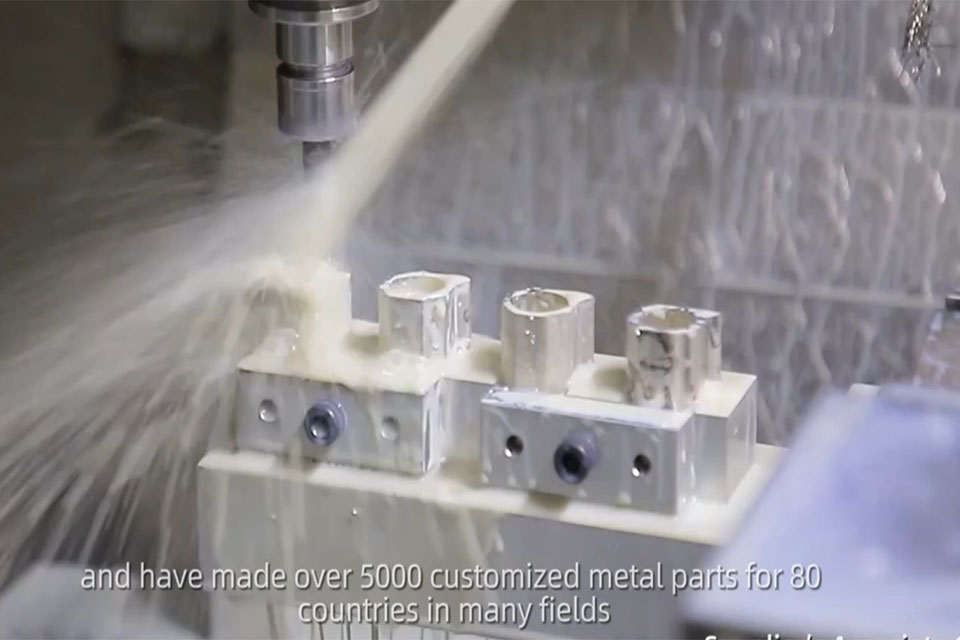
评论
出色的产品案例
标签
相关博客
从我们的博客中获取有关 CNC 加工的最新趋势和事实。




